1. Annual Town Picnics
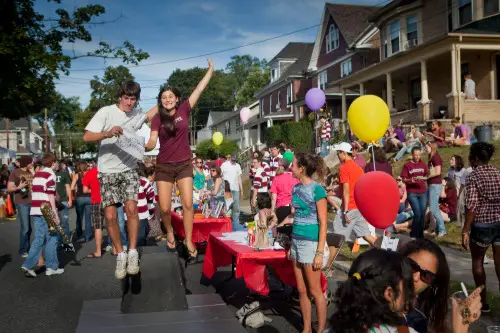
There was a time when every small town had a yearly picnic that felt more like a family reunion than a community event, Washington’s Evergreen Coast website explains. These gatherings would feature homemade dishes, sack races, and local bands playing from a makeshift stage. It was a chance for neighbors to catch up, welcome new families, and let kids run free in the sunshine. But with busier schedules and more entertainment options, town picnics are becoming a thing of the past.
Many communities struggle to find enough volunteers to organize these events, leading to their slow disappearance. People are also more likely to spend their free time traveling or engaging in activities that don’t rely on community involvement. Younger generations, especially, are less interested in spending a Saturday afternoon at a potluck with people they barely know. As a result, what was once a highlight of the summer now only exists in a few places that fight to keep the tradition alive.
2. Local Parades
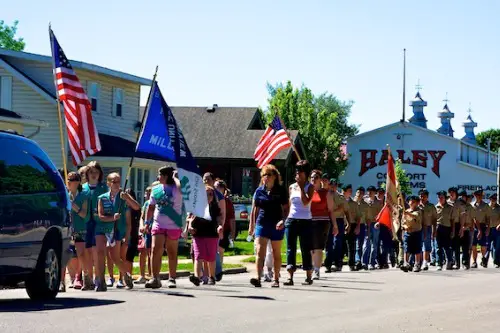
Marching bands, homemade floats, and candy tossed from fire trucks—small-town parades used to be a big deal, HuffPost reports. Whether it was for the Fourth of July, Memorial Day, or the town’s founding anniversary, these events brought the whole community together. Parents would dress their kids in red, white, and blue while grandparents set up lawn chairs along Main Street. Now, many of these parades have been downsized, combined with other events, or canceled entirely.
Rising costs and declining participation have made it harder for towns to justify the expense. High school bands, once a staple of these parades, struggle with fewer students joining, and local businesses don’t always have the budget to sponsor floats. Instead of showing up in person, many people now watch big city parades on TV or scroll past parade highlights online. Without strong community involvement, the charm of small-town parades is slowly slipping away.
3. County Fairs with Homemade Competitions
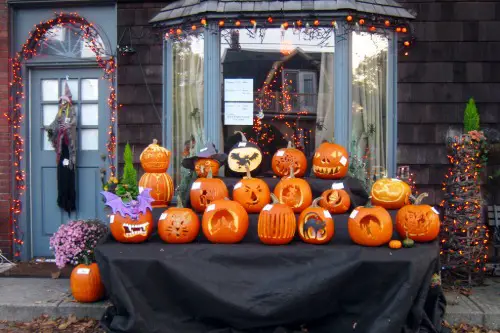
County fairs used to be the ultimate showcase of local talent, from prize-winning pies to the best-looking pumpkins, according to Country Living Magazine. People spent months perfecting their jams, quilts, and woodworking projects just to earn a blue ribbon and some bragging rights. It wasn’t just about competition—it was about celebrating craftsmanship, tradition, and the rural way of life. Today, though, many of these classic competitions are fading as fewer people take up traditional skills.
With the rise of mass-produced goods and busy modern schedules, fewer people are learning how to bake from scratch or sew their own clothes. Instead of entering homemade crafts, many fairgoers now come just for the carnival rides and food trucks. Some fairs have tried to keep these competitions alive by adding new categories like digital photography or best Instagram post. But the days of old-fashioned, handmade entries dominating the fairgrounds are quickly fading.
4. Friday Night Dances
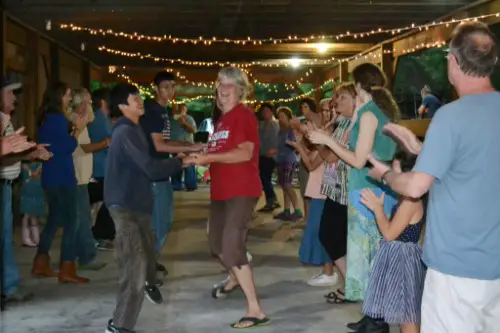
It used to be that small-town community centers or high school gyms turned into dance halls every Friday night. Teenagers, couples, and families would gather for an evening of music, whether it was a country band, a DJ, or just someone playing records. These dances were a safe, fun way for people to socialize, meet new friends, and even find romance, according to the South Dakota Public Broadcasting. Now, with social media and streaming entertainment, fewer people see the need to go out just to dance.
Younger generations tend to prefer texting over in-person meetups, and many small towns no longer have the funds to host regular events. Even high school dances, once a rite of passage, have seen lower attendance over the years. Without enough interest, local dance nights have disappeared from many towns, leaving behind empty community centers and faded memories. A few places still keep the tradition alive, but it’s nothing like it used to be.
5. Church Socials
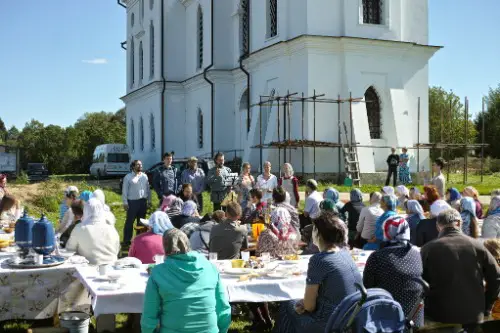
Churches were once the heart of many small towns, not just for Sunday services but for social gatherings. Potluck dinners, ice cream socials, and holiday pageants were all ways for people to connect outside of worship, Ministry Matters explains. These events gave neighbors a chance to support each other, welcome newcomers, and build a strong sense of community. But as church attendance declines, so do the social events that once brought people together.
Many younger families are less involved in church life, and with packed schedules, they often don’t have time for extra events. Churches that once had thriving social calendars now struggle to fill seats on Sundays, let alone organize community meals. Some towns have tried to adapt by holding more casual gatherings, but it’s not the same as the potluck dinners of the past. Without a strong sense of tradition, these gatherings are slowly fading away.
6. Volunteer Firefighter Fundraisers
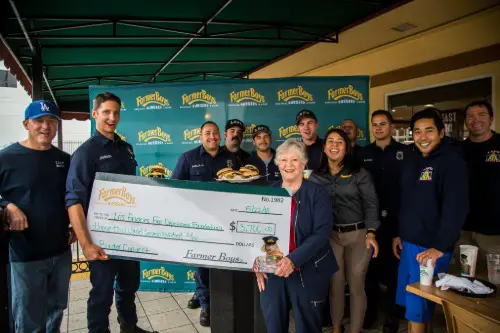
In small towns, volunteer fire departments have always relied on the community to help keep them running. Pancake breakfasts, spaghetti dinners, and bake sales were common ways to raise money for new equipment and station upkeep. These fundraisers were about more than just money—they were a way for towns to show support for their local heroes. But with fewer volunteers and increasing costs, these old-school fundraisers are becoming rare.
Many fire departments now rely more on government grants or online donations rather than hosting big community meals. With busy schedules, fewer people have the time to cook, serve, or even attend these fundraisers. In some areas, volunteer fire departments are disappearing altogether, replaced by paid crews from larger towns. Without the same local connection, the sense of community that came with these events is fading.
7. Town-Specific Festivals
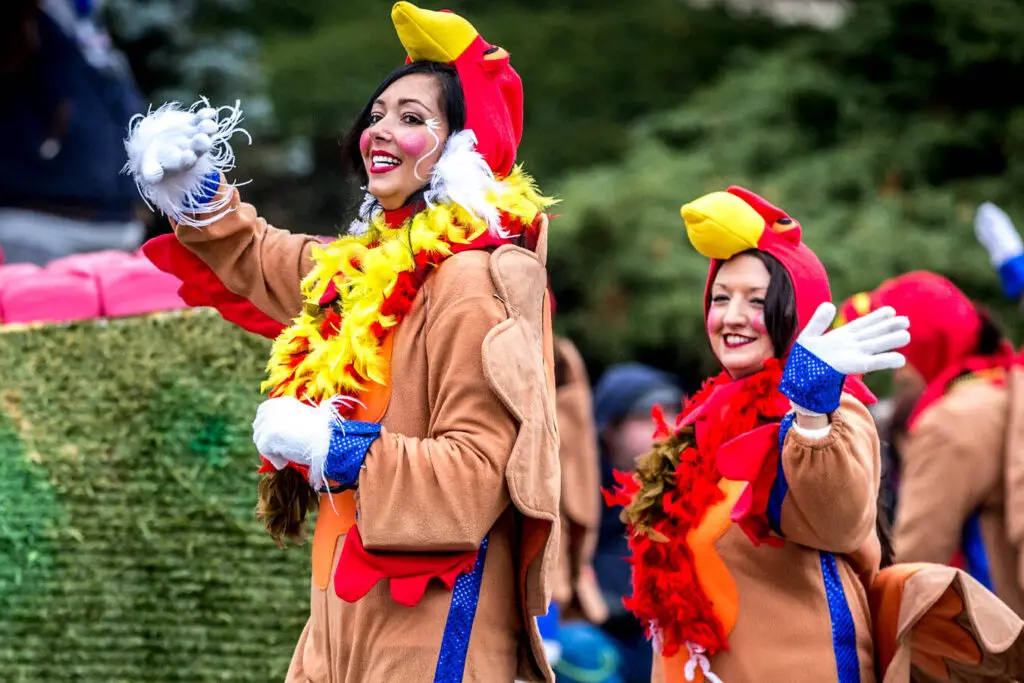
Every small town had that one festival that made it unique, whether it was celebrating a local crop, a historical event, or just an excuse to have fun. These quirky traditions, like watermelon festivals, logging days, or cranberry celebrations, were a source of town pride. Families planned their vacations around them, and people came from miles away to participate. But as costs rise and attendance drops, many of these festivals are struggling to survive.
Some towns have had to cancel long-running events due to a lack of funding or volunteers. Younger generations, who often move away for work or school, don’t always return to keep the tradition going. In some places, bigger regional festivals have taken the place of smaller, more personal celebrations. Without local involvement, these unique events are at risk of disappearing completely.
8. Drive-In Theaters
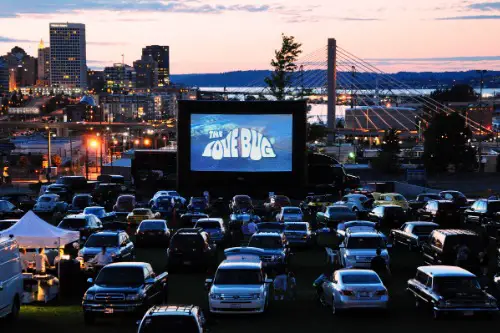
Drive-in theaters used to be a staple of small-town entertainment, offering double features under the stars. Families packed the car with blankets and snacks, while teenagers hung out in the back of pickup trucks. It was an affordable, fun way to spend an evening, and every town seemed to have at least one. But with the rise of streaming services and multiplex theaters, drive-ins are vanishing fast.
Operating costs have gone up, and land developers often buy out drive-in lots for more profitable businesses. Even when some towns try to revive the tradition, attendance isn’t what it used to be. People would rather stay home and watch movies on demand instead of driving out to a field with a scratchy FM radio connection. While a few drive-ins still hold on, most are just fading memories of simpler times.
9. Community-Wide Yard Sales
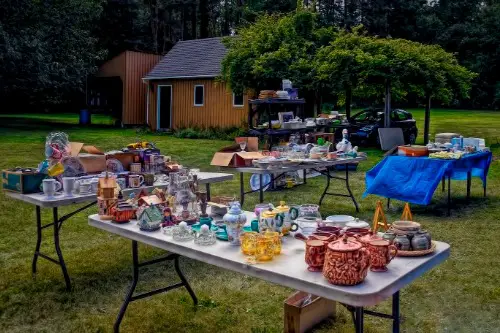
There was a time when entire small towns would organize yard sale weekends, turning front lawns and sidewalks into a massive open-air market. Families would drag out everything from old furniture to vintage toys, and neighbors would spend the day bargaining, chatting, and catching up. These sales weren’t just about making a little extra cash—they were social events where the whole town came together. But as online marketplaces like Facebook Marketplace and eBay have taken over, these big in-person sales have become less common.
People now prefer to sell their unwanted items with a few clicks rather than setting up tables and spending the whole day outside. With fewer participants, town-wide sales lose their appeal, making it harder for them to continue. Many younger homeowners also don’t accumulate as much “stuff” as previous generations, leading to less interest in hosting sales in the first place. Without the same community participation, these once-thriving weekend traditions are slowly disappearing.
10. Door-to-Door Trick-or-Treating
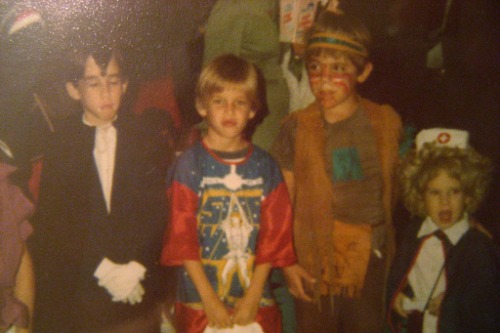
Halloween used to mean kids running from house to house in full costumes, collecting candy from neighbors they knew by name. Parents stood on porches chatting while handing out homemade treats like popcorn balls or caramel apples. It was a night where the whole town felt connected, and kids could safely roam the streets without worry. But over the years, concerns about safety and changing social norms have led to a decline in traditional trick-or-treating.
Now, many families prefer organized events like “trunk-or-treat” gatherings in parking lots or community centers. Fear of tainted candy, increased traffic, and fewer families knowing their neighbors have all contributed to the shift. In some areas, fewer houses even participate, making the old-fashioned door-to-door experience less exciting for kids. While Halloween is still celebrated, the small-town tradition of trick-or-treating the entire neighborhood is fading fast.
11. Main Street Christmas Displays
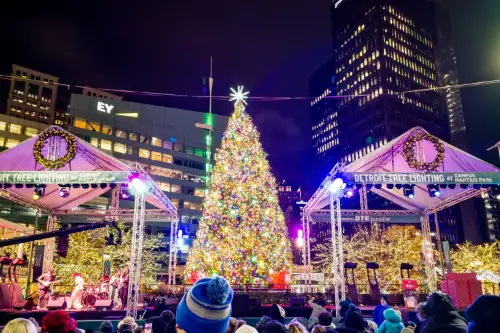
During the holidays, small towns used to go all out decorating their Main Streets with twinkling lights, nativity scenes, and giant Christmas trees. Local businesses joined in, competing for the best window displays while residents gathered for caroling and hot cocoa. It was a magical sight that made every town feel like something out of a Hallmark movie. But as local businesses close and city budgets tighten, these grand displays are becoming less common.
Some towns struggle to afford the electricity costs or manpower to put up decorations each year. Big box stores and online shopping have also reduced foot traffic on Main Streets, making business owners less likely to invest in festive displays. In some places, holiday events have moved to larger commercial areas, taking the charm away from small-town centers. Without these classic decorations, the holiday season just doesn’t feel as special in many small communities.
12. Independent Local Newspapers
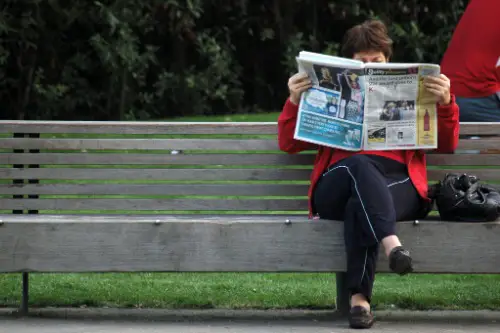
Small-town newspapers were once a vital part of daily life, delivering everything from town meeting notes to local sports scores. They covered personal stories, like milestone anniversaries and high school graduations, that bigger news outlets would never bother with. People relied on these papers to stay connected and informed, often passing them around at the local diner. But as print journalism declines and digital news takes over, many small-town newspapers have disappeared.
With fewer subscribers and ad revenue, many independent papers simply can’t afford to stay in business. Larger media companies have absorbed or shut down many of these local publications, replacing them with regional coverage that lacks the personal touch. Social media has also changed the way people get news, with local updates now coming through Facebook posts rather than a printed paper. Without these small newspapers, many communities have lost a vital piece of their shared history and identity.


